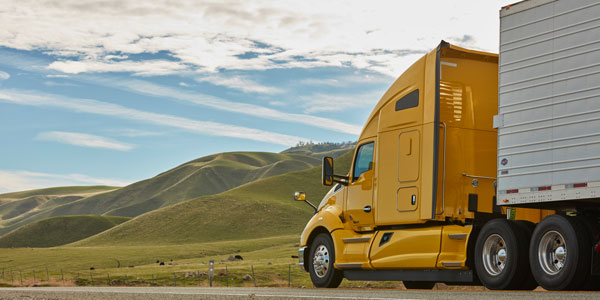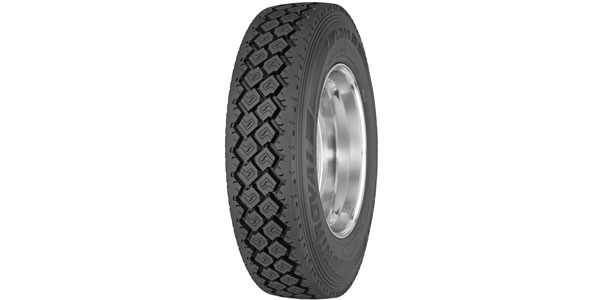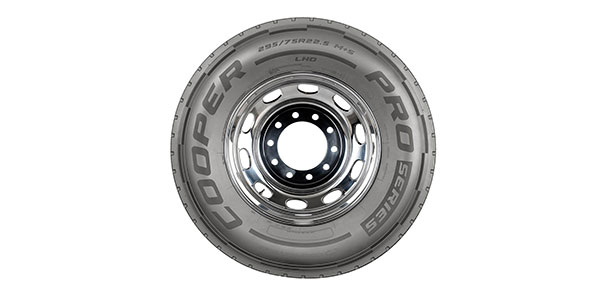Technology is taking over the trucking industry. That much is clear across every aspect of the truck—from the state-of-the-art features of the engine to the tracking software that lets you know where your trailer is at all times. Naturally, it’s true for the tires as well. It might not be the most immediate area you think of when it comes to sexy new technology, but there’s a lot going on in the tire technology segment to make fleet managers’ lives easier. Consider this a primer on today’s truck tire technology.
Under pressure
One of the biggest areas of tire technology is in inflation systems, whether they are automatic tire inflation systems (ATIS) or tire pressure monitoring systems (TPMS). FE published a big story on this topic in the May issue, so we won’t get into too many of the details here, but here are some of the basics on what these systems offer.
Many interviewed agreed that under-inflation is the biggest issue in the truck tire industry, and that over-inflation is also a major hindrance for fleets looking to maximize efficiency. Federal Motor Carrier Safety Administration (FMCSA) and U.S. Environmental Protection Agency (EPA) studies show a 10% longer tire life with tire inflation systems.
“It is estimated that up to 85% of blowouts could be prevented if tires were properly inflated. While the number one problem with trailer tires is under-inflation, over-inflation and mismatched duals also account for their share of trouble,” notes Matt Wilson, Hendrickson’s controls business unit manager.
But again: most of that information is in the May story, so we won’t go into details here. Instead, let’s go beyond ATIS and TPMS.
Beyond pressure management
There’s much more than just tire pressure software in the world of truck tire technology. Fleet management systems offer a host of options for fleet managers looking to get the most out of their tires. The tire experts interviewed for this story pointed to several areas of tire analytics and the benefits of tracking these aspects of the tires, including:
- Tracking tire wear, which can help identify any abnormal wear situations and help fleets know when it’s the right time to remove worn tires.
- Retread tracking; Eric Higgs, Bridgestone Americas Tire Operations’ president of truck, bus and retread tires for the U.S. and Canada, highlights the Bandag Alliance System (BASys) as an example of this. BASys tracks and reports on a fleet’s retread inventory and tire performance to ensure that fleets achieve maximum performance and treadwear from their casings.
- Further analytics, including tracking of tire pressure data, temperature, tread depth and wear, and possibly some predictive analytics. Sharon Cowart, product marketing director for Michelin Americas Truck Tires, notes that this kind of technology is still in its infancy. “Tire makers and other suppliers are beginning the process of leveraging existing and forthcoming data sets for analytics, TPMS data among them,” she says. “Some fleet management systems have tire modules included which provide basic features for tracking tire life cycle data, but true analytics requires systems that are far more robust. Michelin has one such initiative as part of our digitization effort to deliver predictive and prescriptive solutions for fleets.”
In the back office
Fleet managers have a multitude of dashboards that display data analytics. As more and more companies get into the technology game, each with their own systems, dashboards and hubs, simplicity can be a godsend.
Many potential benefits come from integration of tire technology systems, such as those that come with TPMS and ATIS, with existing telematics offerings. Last year, PeopleNet integrated with Continental’s ContiPressureCheck system to make it available to those fleets that have PeopleNet systems installed in their trucks. Eric Witty, vice president of product for PeopleNet, touts this as a useful step in making TPMS easier to access and understand.
“The integration between PeopleNet and Continental and other TPMS providers gives our customers two additional values,” Witty begins. “One is that the driver can get alerted and visually see in the cab when there is a tire problem and which tire it is, using the same PeopleNet display that is used for the rest of the driver’s activities. The other is that the data from the TPMS can be sent from the vehicle to the back office in near-real time to enable management and maintenance to take appropriate action when necessary.
“All of the TPMS that we integrate with allow both the driver and back-office personnel to continuously monitor the real-time pressure and temperature of their tires,” he adds.
Witty says that fleets will realize return on investment “pretty quickly.”
“Having an under- or over-inflated tire can be hazardous, potentially resulting in tire failure that at the very least would require repair or potentially cause an accident,” he says. “From that perspective, a TPMS can prove its value very quickly. While that might be an extreme example, a TPMS can also show its value over an extended period time. Proper tire pressure plays an important role in maximizing miles per gallon (MPG) and tire life for individual vehicles and across an entire fleet. A TPMS gives the visibility needed to ensure ideal pressure is achieved to lower fuel costs and reduce unnecessary tire wear.”
Read more about integrating your dashboards here.
Beyond tires
Increasingly, several tire companies are going beyond the tire, seeing themselves more as “mobility providers” than tire makers.
“Emerging trends such as electrification, autonomy and connectivity are profoundly shaping the future of the transportation industry and, ultimately, the way fleets do business,” Bridgestone’s Higgs says. “From integrated technologies to fuel efficiency gains, Bridgestone is looking at ways to make mobility more efficient for fleets.”
Among the trends Bridgestone has noticed, Higgs continues, are that fleets want to go farther carrying heavier loads using less fuel, and that fleets are looking for more savings with fuel-efficient retreads. Higgs added that Bridgestone is providing products based on these equipment trends, including low rolling resistance Ecopia tires and Bandag FuelTech retreads.
Adam Murphy, vice president of Michelin B2B, notes that Michelin sees itself as more of a mobility provider than a tire maker, and that the company began offering digital services and solutions in the past couple of years and is in the process of expanding that part of their business.
One example of a digital solution provided by Michelin, Murphy notes, is the Michelin OnCall service.
“Michelin OnCall is an emergency road service offer, the premise of which is basically to improve the uptime of our fleet customers by working with our network to be able to get them up and running more quickly when they have an emergency roadside event,” he explains. “If we can get them up and running in 120 minutes or less instead of where they were, at 150 or 160 minutes or so, then that’s a great example of us thinking more broadly about what their challenges are and bringing solutions beyond tires.”
In May, Michelin launched Energy Guard, which Murphy notes is “completely non-tire-related.”
“It’s an aerodynamic system that is also grounded in us talking to fleets about their ongoing desire to become more and more fuel-efficient, and they’re used to talking to us about the role of tires in that aspect via rolling resistance,” he explains. “But we came to feel the pain. As they were starting to deploy aerodynamic solutions, they were seeing the fuel savings that were promised, but a lot of those savings were being offset by increases in maintenance cost because in some cases the solutions weren’t very robust. Trucks are in and out of docks all day long. Skirts are getting damaged. Boat tails are getting damaged. Drivers hated some of those solutions because it’s a pain for the driver to have to navigate around boat tails, for example, as they’re loading and unloading or pulling in and out of docks. We said, we’ve got some expertise in aerodynamics. It’s come along with all the work we’ve done with fleets on improving fuel efficiency. We’ve acquired some intellectual property. We think we could do this in a much simpler way that still allows fleets to improve the efficiency of their operations from a fuel economy standpoint, but drivers are happy with it because it’s not disruptive. The maintenance team is happy with it because it’s a much more robust solution.”
Don’t you forget about application
TPMS, ATIS and other technology can be wonderfully helpful, but it is important not to forget the basics; for instance, the vital importance of spec’ing the right kind of tire for the application. All the technology in the world won’t matter if your equipment doesn’t match your application.
“Selecting tires designed specifically for each application is important, so fleets should evaluate tires in the specific operation where they are expected to run,” says Gary Schroeder, executive director of Cooper Tire’s global truck and bus tire business. “Using the proper tires can reduce the total cost of ownership for your tire program.”
“Periodic air checks and visual inspections are highly recommended,” says Rick Phillips, vice president of sales for Triangle Tire USA. “The application will determine the frequency with which the fleet should be inspecting their tires. The more severe the application, the more frequently someone will need to put eyes on the tires.”
Phillips also had specific advice for those spec’ing truck and bus tires. “Truck and bus radial (TBR) tires are designed to be installed in a specific position on the vehicle and to be used in a specific application,” he says. “The first step in getting the most out of your tire investment is to be sure you get the right product for the application, and the second step is to be sure it’s properly installed in the proper position on the vehicle. Then the ultimate step, of course, is to maintain the tire throughout its life cycle.”















